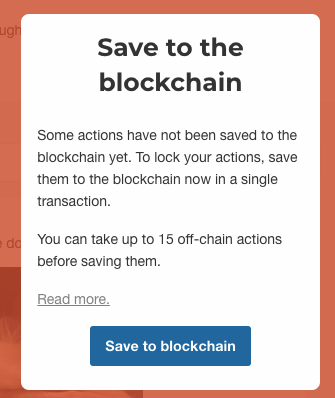Despite the (cat-scratch) fever over CryptoKitties last year, the first killer decentralized app has yet to materialize. Though there is no shortage of dapps that claim to offer the web 3.0 version of any number of services—everything from decentralized Uber to decentralized Minecraft to decentralized cloud storage—the widespread adoption of dapps has yet to materialize. Which is not to say the more prominent ones aren’t worth trying out.
First up: Peepeth, a variation on decentralized Twitter.
One of the first things that Peepeth founder Bevan Barton tells me is that he is “not really a social media guy.” His 194 followers on Twitter support this claim. So why, you might wonder, is he trying to create an improved, decentralized version of the popular microblogging platform?
“A lot of people tend to assume that Peepeth is basically ‘blockchain-Twitter,’ but that’s actually not my intent at all,” says Barton, the lone developer behind the service. “I don’t really think that’s something the world needs, necessarily.”
Social media is toxic and divisive, he says, and intentionally so to drive engagement; he wanted to create a service where rules and features to deflect those tendencies are baked in from the beginning.
On first glance, Peepeth, which has been live in an “experimental” invite-only form since the end of March, looks an awful lot like a Twitter-clone. Users can send 280-character peeps, follow and be followed, scroll through their news feed—you know, all the addictive qualities of social media that cause us to forsake our friends and family. The difference is that Peepeth stores those tweets—er peeps—on the Ethereum blockchain.
Instead of an omnipresent blue bird, Peepeth features a cute penguin whose beak is the Ethereum logo. (Penguins do not make peeping noises, in case you were wondering. And the name—pronounced ‘peep-eth,’ not ‘peep-eeth’—is meant to “poke fun at itself,” says Barton. “Obviously peeping is not the most flattering verb you could choose.”)

The differences go beyond branding, though. First off, Peepeth is moderated—and not in the ‘Ok, we’re finally banning Alex Jones because we can’t ignore his bs anymore’ kind of way. While the blockchain is immutable, peeps that don’t adhere to Peepeth’s Code of Conduct—adopted from a discourse on ‘Right Speech’ by Zen leader Thich Nhat Hanh—aren’t shown on peepeth.com. (The first entry in the Code of Conduct reads: “Aware of the suffering caused by unmindful speech and the inability to listen to others, I am committed to cultivating loving speech and deep listening in order to bring joy and happiness to others and relieve others of their suffering.”)
The fact that it’s all on the Ethereum blockchain means that you can see the difference between the (unedited) blockchain and the (edited) peepeth.com interface. So it’s actually the moderation process itself that’s transparent. Every peep backed up to the blockchain is still technically permanent—complete with any time-stamped opinions, problematic phrasing, or typos. (Below is a reminder that what I’m about to peep will be part of the Ethereum blockchain forever. Good thing it’s hard to go wrong with sharing pictures of dogs on the internet.)
“Moderation is one tool that’s going to be used to create a more mindful community,” says Barton. “The plan is to have a community-based moderation system. But right now it’s fairly basic because it is in a very experimental phase.”
In its current form, the platform’s invite-only. After requesting to join, I also tweeted at Peepeth, which apparently speeds things up. Around eight hours later, I received an invite link via email and was able to proceed. If you don’t already have the Trust browser or MetaMask, which allows you to run dapps without running an Ethereum node, you’ll have to set that up next. Then you’ll have to buy or transfer some ether.
“The barriers to to on-ramping new users are pretty high,” says Barton. “The goal with the next iteration of Peepeth is to basically remove those obstacles.” So, rather than requiring users to sign up, set up MetaMask, and transfer ether into a wallet, users will just need to set up an account using a web browser, he says. “It’s going to be probably a couple of months before Peepeth will be basically as easy to use as any web 2.0 platform.”
As you might gather from the whole “ether wallet” step, Peepeth isn’t totally free. For most users, a peep, or a follow, or any other action that gets recorded on the blockchain requires a small amount of ether (the equivalent of a few cents, depending on the type of transaction). Rather than spending fees on each transaction, Peepeth allows you to make up to 15 off-chain actions and then just save them in one transaction.
Barton says he eventually wants Peepeth to be free, at least for basic actions. Peepeth is in the process of switching to a model that allows users to peep for free. People who have met certain criteria, such as linking to their Twitter or GitHub accounts, can “sign” an action (to prove that it’s them doing the action) and then peepeth.com batches the transactions together on an hourly basis. The idea, devised by engineer Andrew B. Coathup and explained further in this Medium post, is meant to help reduce congestion, thereby increasing the service’s scalability.
As part of Barton’s attempt to create “a social network for those who value mindful, responsible engagement,” Peepeth features a digital badge that can be purchased for a donation of $25 or more to the Against Malaria Foundation, which has been rated one of the most cost-effective charities worldwide. “The idea is to promote the idea of effective altruism—basically asking, ‘How can we do the most good?’” says Barton, who plans to include more charities in the future. Purchasing a badge means that your profile is more highly ranked in follower suggestions. Peepeth users have bought more than 1460 mosquito nets so far.
Another feature which radically differentiates Peepeth from its conventional cousin is its policy regarding political debates (aka the lifeblood of Twitter). Users are encouraged to use tag all political peeps with #politics so users can ostensibly be shielded from the horrors of inadvertently reading about Trump or midterm elections. It doesn’t hide the peep itself, but you have to click a button to “reveal” the peep, like how Twitter hides certain tweets that it deems to contain “sensitive material.”

“Basically it gets people to question whether a political discussion is appropriate on a 280-character platform, or if it’s just divisive and creates flame wars,” says Barton. Peepeth’s About section is a touch more tempered. “This is an evolving solution to a tough problem,” it notes.
As of last week, Peepeth had fewer than 3,000 users, though there are a number of high-profile adopters, including Vitalik Buterin, Chris Dixon, and (somewhat unexpectedly) country singer Shooter Jennings, who is such a big fan of the platform that he discussed it on Joe Rogan’s show.
That number of adopters is infinitesimal of course, compared with Twitter’s 336 million monthly active users. So, the question remains: Can a social media experiment with a charming penguin mascot, a confusing name, and a sincerely kind mentality appeal to the masses? Barton wants to find out. “A lot of people who want to register don’t have web three or don’t have ether, so I’m expecting that once that obstacle is removed, it’ll get a lot more traction. I want to see how far I can take it.”
Images from peepeth.com.
